Spain has had many football jerseys over the years, but we will start with the first World Cup in which the national team participated, in 1934, after boycotting the 1930 tournament in protest. This jersey is red, a colour that had not been used for many previous designs, including an unpopular white jersey.
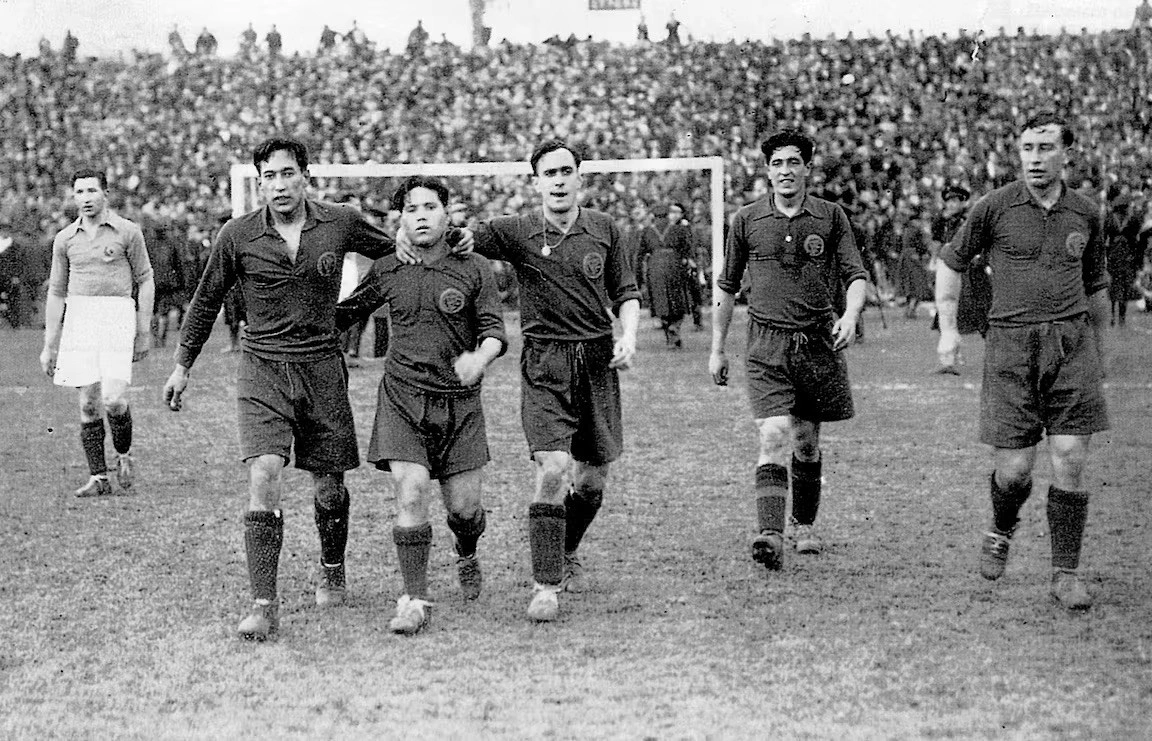
We continue to 1950 and the famous World Cup in Brazil, where the 'Maracanazo' took place and Spain finished a commendable fourth place. Like all the teams of the time, they wore a red button-up jersey in a very simple style.
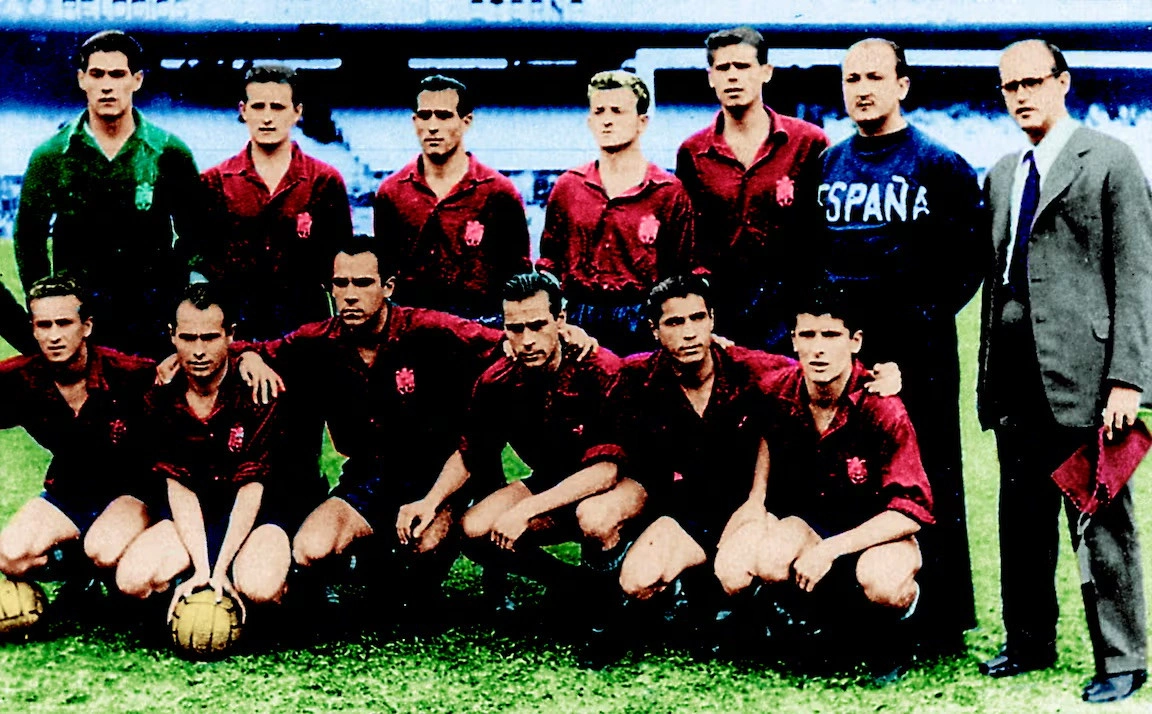
We take another leap back to Chile in 1962 with yet another red jersey. This time, it has no buttons and a round neckline, which greatly improves on what we had seen up to that point.
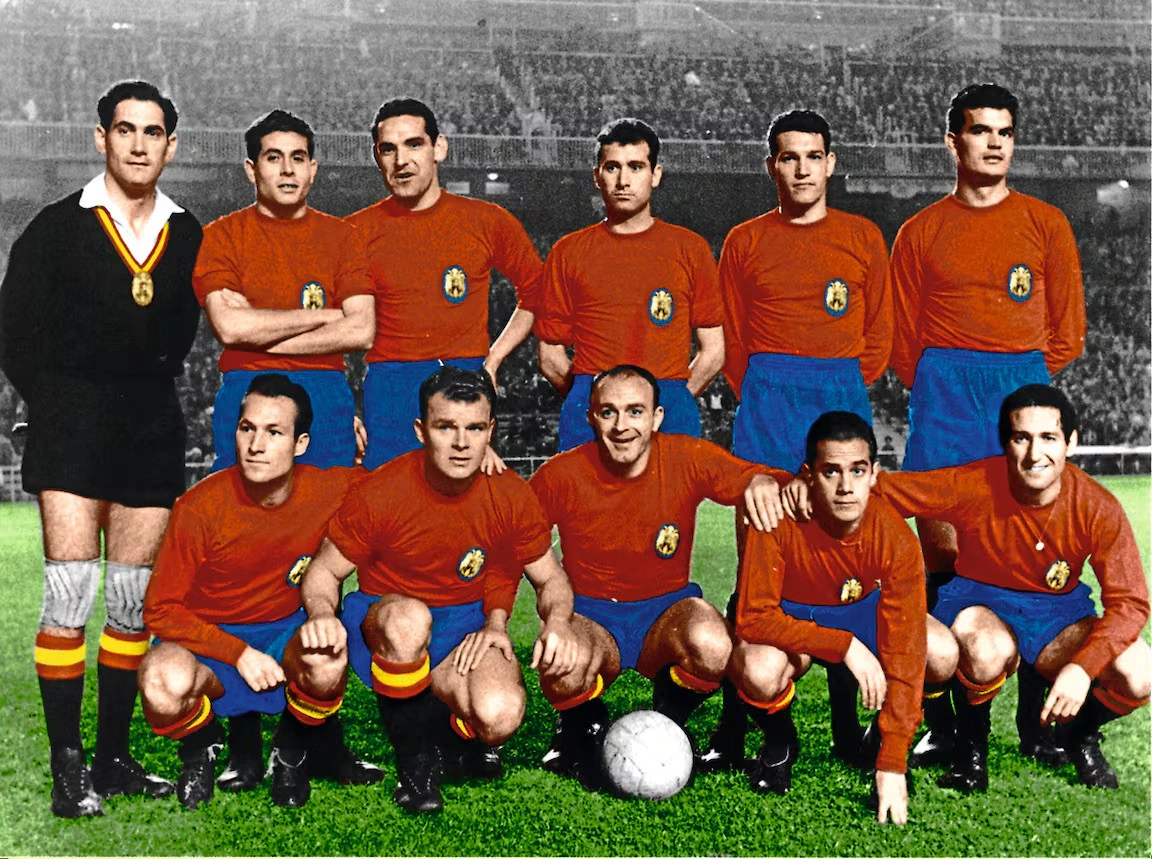
This jersey remained unchanged for more than 20 years, with only minor variations in the shade of blue of the shorts or some minor details. This would seem crazy to us today, but it was perfectly normal given the national context at the time. This kit was used by England in 1966 and by Argentina in 1978.
Next, we move on to Spain in 1982, when adidas took over the design of the national team's jersey. The new design featured an Adidas polo-style collar and a new crest, making the jersey a bestseller.

Next, we move on to the 1986 World Cup in Mexico, courtesy of Le Coq Sportif. The jersey is a slightly darker shade of maroon with a design and subtle yellow detailing. It is paired with blue shorts and black socks. It is very much in keeping with the style of the time.

Next up is Italy in 1990, when Spain wore a more innovative jersey with a V-neck, reminiscent of the early kits. It featured a yellow line and a return to the polo neck. It was a more stylish design for the national team, who made it to the round of 16.
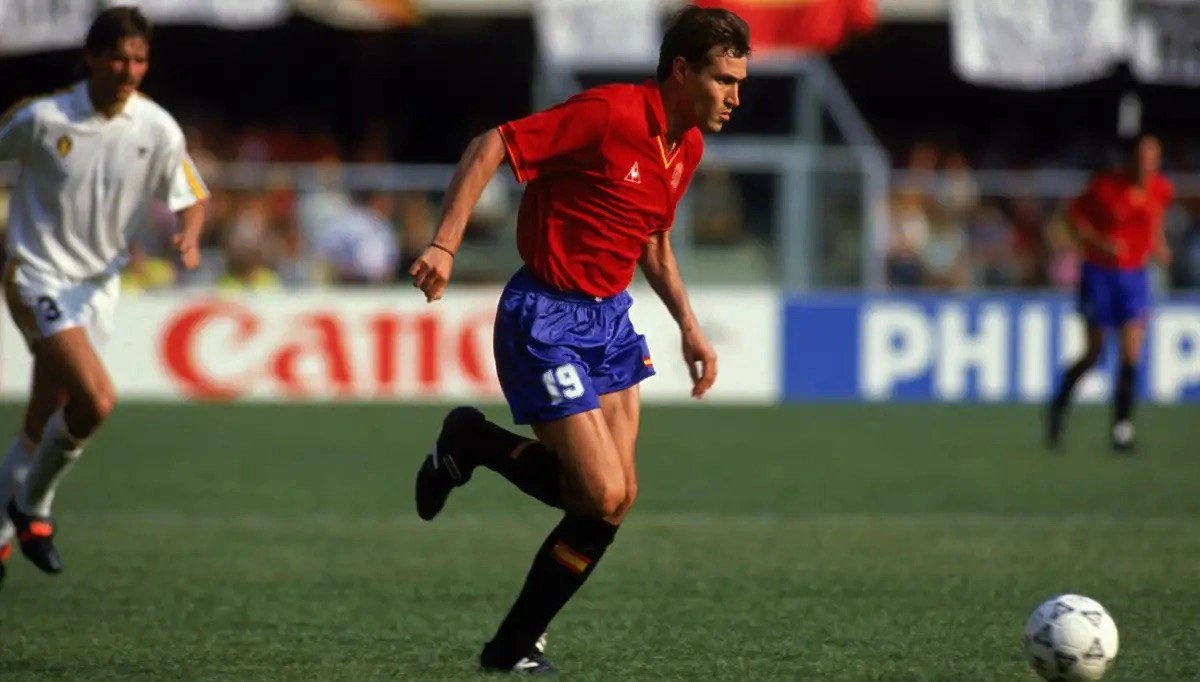
Moving on to the United States in 1994, both the red and white jerseys were memorable, as was the legendary image of Luis Enrique, which will remain in our memory forever. With blue and yellow details on the jersey and shorts, Adidas once again raised the bar with this bold design.
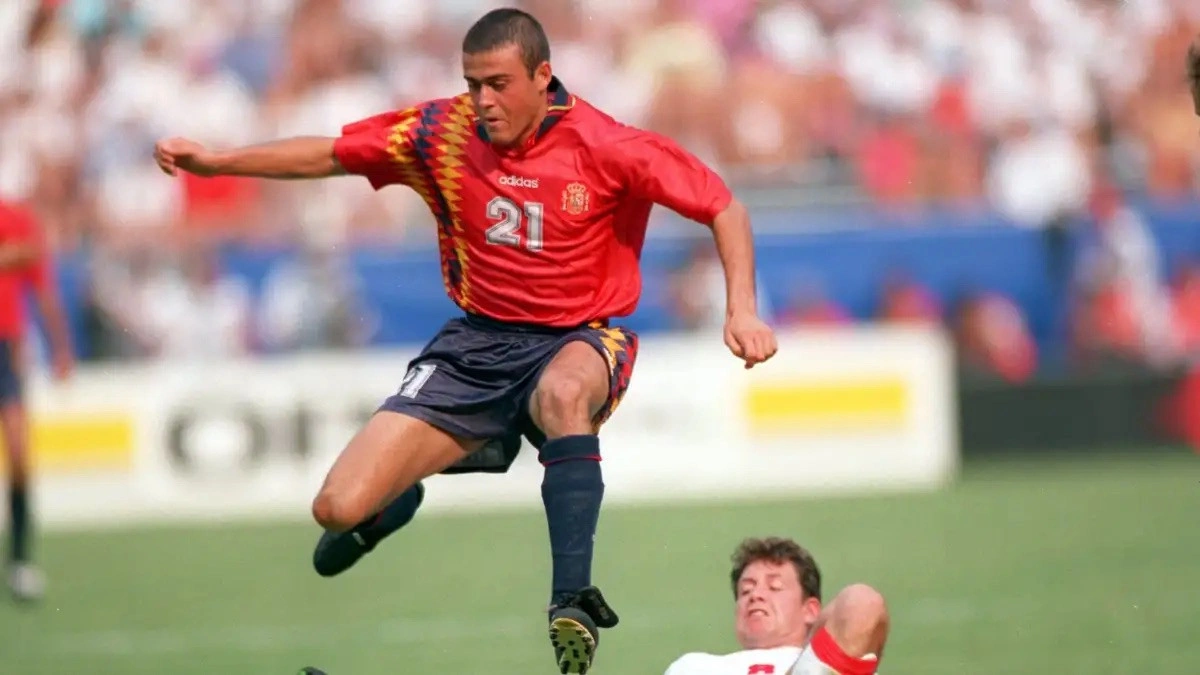
In 1998, the V-neck was revived in France with lots of blue detailing, even on the sleeves of the jersey. This very different design made the jersey a spectacular item.
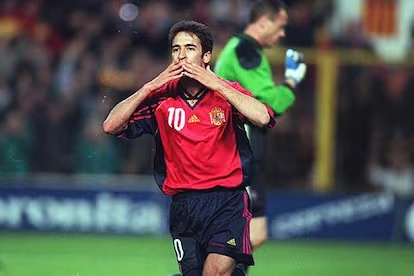
We also remember Korea and Japan 2002 with a bitter taste in our mouths. The team wore a much more minimalist design back then, with light yellow details on the collar and sleeves, and colour details on the shorts.
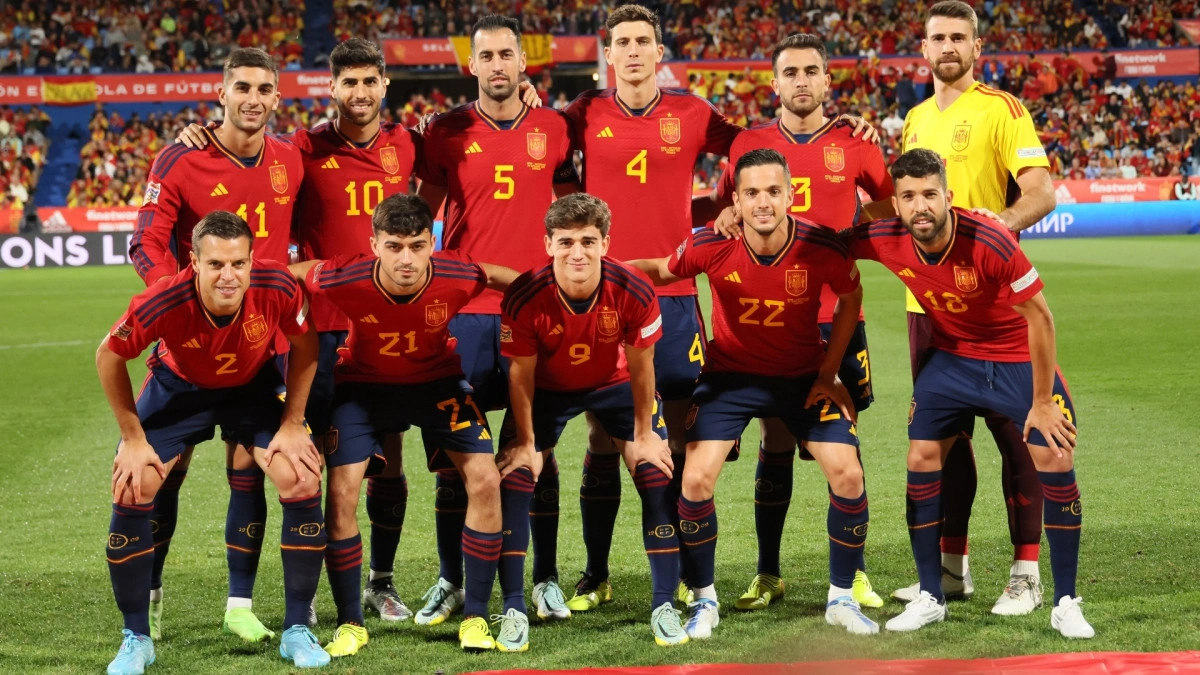
Back in Germany in 2006, we added a slight retro touch with yellow stripes on the jersey while maintaining the minimalism that was popular at the time.
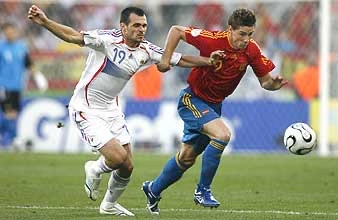
And so we come to the 2010 World Cup in South Africa, where the red and blue jersey worn by Spain in the final have gone down in history. These sublime jerseys, which combined minimalism and elegance, helped the team become World Champions. Iconic.
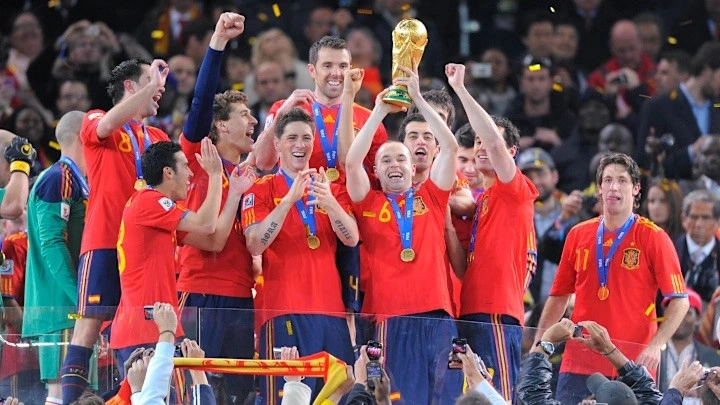
In 2014 in Brazil, we had a different jersey design. The jerseys featured a special pattern and subtle yellow details, with a predominantly minimalist style for both the home and away kits.

In 2018, Russia saw a return to the spirit of 1994 with a jersey that was very much in keeping with that era. It moved away from the simpler designs of the past, and had more personality. It was very different.
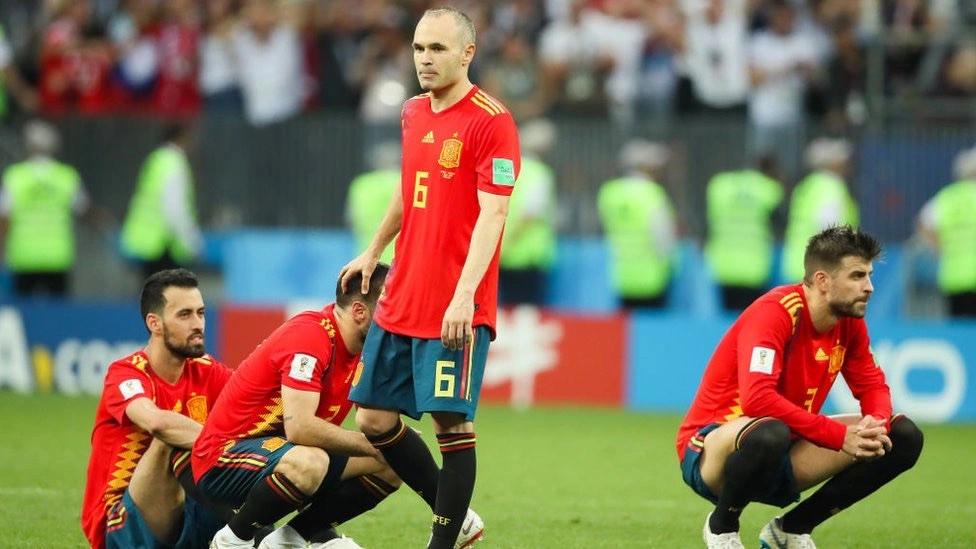
And finally, we come to the last one for the 2022 World Cup in Qatar. The V-neck has been brought back, complete with blue and yellow details, and the jersey has returned to a slightly retro style.

And friends, in 2026, we have a new World Cup, and I can't wait to see what the new Spanish national team jersey will look like.

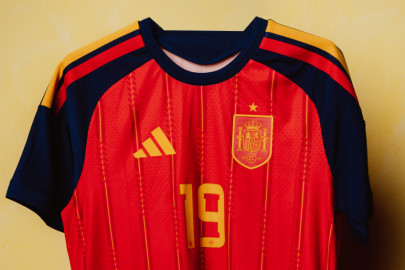
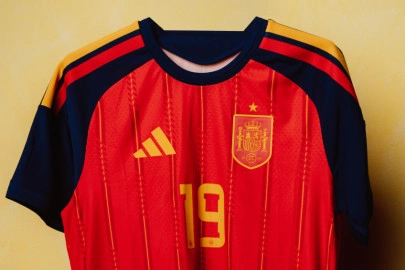
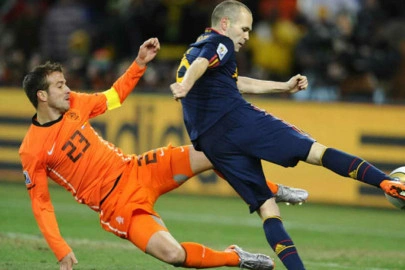

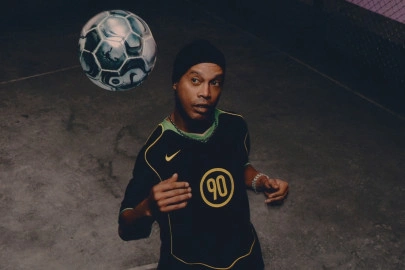
Log in or
create your account
Your best self starts here. Come in and get in your prime